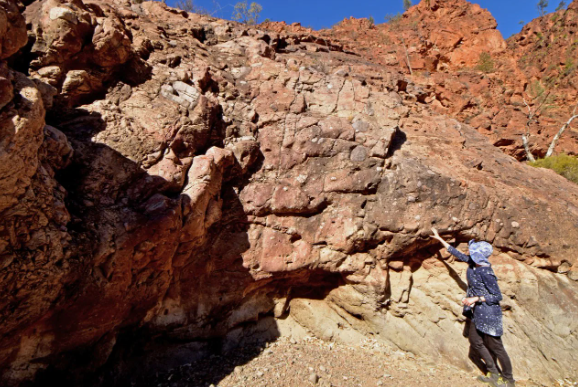For the Earth to become as cold as it was during the “Snowball Earth” era, and stay there, required a combination of a reorganization of the Earth’s continents and the weathering of a vast volcanic province, scientists have argued. Another team, coincidentally publishing simultaneously, blames an asteroid instead. However, at this stage, they have less evidence to point to.
The periods known as Snowball Earth made our recent ice ages look like a minor chill. Not only were there massive glaciers at the equator, but in one case the cold lasted an estimated 57 million years. It’s still a puzzle how life survived.
While some scientists work on that question, others want to know how such an event could have occurred. Changes to the Earth’s orbit, such as those that caused recent cold periods, are not remotely sufficient. There’s at least one common feature between the big event and its pale imitations, however – low levels of carbon dioxide.
As the primary driver of changes in Earth’s temperature, there is no doubt carbon dioxide levels were very low during the Snowball Earth periods, but that leaves the question of why.
“We now think we have cracked the mystery,” said Dr Adriana Dutkiewicz of the University of Sydney in a statement. “Historically low volcanic carbon dioxide emission, aided by weathering of a large pile of volcanic rocks in what is now Canada.”
“At this time, there were no multicellular animals or land plants on Earth,” Dutkiewicz noted. “The greenhouse gas concentration of the atmosphere was almost entirely dictated by CO2 outgassing from volcanoes and by silicate rock weathering processes, which consume CO2.”

Evidence of the Sturtian Snowball Earth is found in rocks worldwide. Here, Dr Adriana Dutkiewicz studies examples in the Flinders Range not far from the original discovery site.
Image Credit: Professor Dietmar Müller/University of Sydney
Evidence for the weathering part is easy to find. The Franklin Igneous Province was by far the largest volcanic province on Earth at the time. Once its growth, and the accompanying carbon release, stopped, exposure to air and water inevitably led to chemical changes that would have absorbed carbon dioxide from the atmosphere.
That would not be enough on its own, however. Once the Earth became covered in ice it reflected more sunlight back to space, temporarily maintaining low temperatures. On the other hand, all that ice would also have slowed the rate of weathering. In normal circumstances, this would have caused carbon dioxide levels to rebound, warming the planet again. The fact this didn’t happen, Dutkiewicz and co-authors argue, indicates for tens of millions of years the release of CO2 must have been as slow as its removal.
They blame this on continental movements at the time. The longest Snowball Earth, known as the Sturtian after the gorge where evidence first emerged, coincided with a period where just 9 megatonnes of carbon were released each year. At that low rate, even the minimal weathering beneath thick sheets of ice would have been sufficient to keep atmospheric carbon low. This low release rate reflects a relative dearth of underwater volcanoes at mid-oceanic ridges, in turn a consequence of the break-up of Rodinia, the supercontinent before Pangaea.
Looking one step further back in the chain, Dutkiewicz told IFLScience, that responsibility lies with mantle convection processes, but “the problem [of what causes them] is not well understood. This is an area of intense study and has been for a long time.”
Almost the entire Earth froze over at least once more, in the Marinoan glaciation. Although Dutkiewicz believes there is some commonality to the two glaciations’ causes, she told IFLScience: “Marinoan was much shorter and happened a lot later. The Sturtian is the one that requires explanation.”
At the same time as Dutkiewicz and colleagues were publishing their work, another paper reported that an asteroid strike of similar size to the “dinosaur-killer” could have tipped the world into a similar frozen state. The authors of that paper conclude that such an event during a warm period, such as the Cretaceous, would have much more temporary effects. When carbon dioxide levels were already low, however, it could trigger something much bigger.
Dutkiewicz acknowledged to IFLScience that there could have been factors beyond the ones her team identified, but added the other paper “is purely a climate modelling study hypothesizing whether an asteroid impact of comparable size to the Chicxulub impact could have triggered a global glaciation. There is no evidence that such an asteroid impact actually triggered ‘Snowball Earth.’ It’s a highly speculative scenario. In any case, even if such an impact had occurred, it is unlikely to sustain a glaciation for very long (geologically speaking).”
Dutkiewicz’s work is open access in Geology. The asteroid hypothesis is open access in Science Advances.
Source Link: Snowball Earth: Our Planet’s Greatest Ice Age Probably Didn’t Have Single Cause